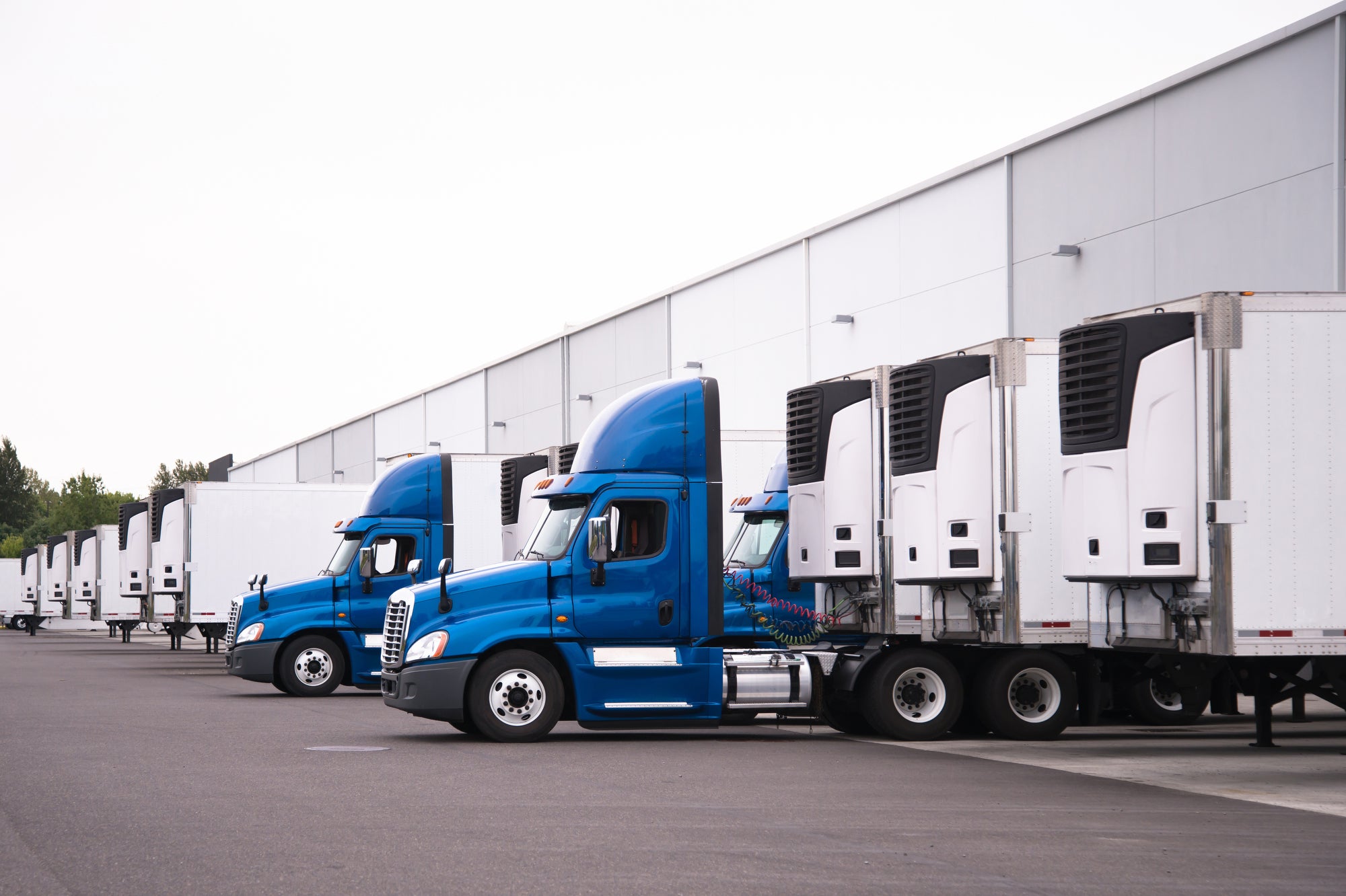The Race to “Green” New York’s Mega-Warehouses
Over the last decade, the boom in online shopping and e-commerce has made massive warehouses spring up in New York faster than you can make an online purchase.
New York City and New York State are racing to develop the state’s first Warehouse Indirect Source Rule (ISR) to help rein in pollution from the state’s unchecked expansion of the logistics industry and drive us toward a modern goods movement system of the future that doesn’t pollute our communities.
Over the last decade, the boom in online shopping and e-commerce has made massive warehouses spring up in New York faster than you can make an online purchase. According to the Environmental Defense Fund’s “Warehouse Boom” report, 4.9 million New York residents now live within half a mile of a mega-warehouse. A newly updated version of the report found that four times more warehouse square footage was built over the last decade, compared to the prior decade.

Semi trucks with refrigerated trailers (vitpho / Getty Images)
These giant warehouse complexes don’t just help deliver our goods. They’re also generating massive amounts of pollution from the many delivery trucks that come and go from them every day. These behemoth facilities require hundreds, sometimes thousands, of vehicle trips per day, including a large number of heavy-duty diesel trucks that spew particulate matter and smog-forming nitrogen oxide. These toxic pollutants contribute to dangerous, health-harming air pollution that increases the risk of asthma, heart attacks, and premature deaths in nearby neighborhoods, and these impacts aren’t felt equally. Black New Yorkers are 59% more likely to live near a polluting warehouse than would be expected based on statewide demographics, and Latino residents are 48% more likely to live near a mega-warehouse.
So what would these policies actually do to solve our growing air quality crisis? ISRs give us an innovative way to tackle New York’s warehouse pollution problem. The Clean Deliveries Act, a bill currently on the agenda in the state legislature, would require the state to review emissions related to the operations of all e-commerce warehouses that are over 50,000 feet to help policymakers get a sense of the scale of the problem. Warehouse operators would then be tasked with creating plans for how they would reduce their pollution, including committing to acquiring more zero-emission vehicles and charging infrastructure, installing solar panels, or paying additional fees. Plus, the legislation would rein in the wild west nature of the industry by including permit requirements for new warehouse developments. Finally, the bill would require the state to conduct a study to better understand the benefits of developing zero-emission zones in congestion hot spots across New York.
New York City’s ISR bill, which was supported by advocates, the City Department of Environmental Protection, and labor at a hearing in February, would create a similar rule governing warehouses in the city. It’s heartening to see our City officials finally take this growing issue seriously. But the reality is, mega warehouses aren’t just a problem in New York City — they’re a problem for the entire state. From Long Island to the Hudson Valley to Western New York, we’re seeing unchecked warehouses cropping up in communities with zero regulation or accountability. We need both strong local and state legislation to ensure that warehouse operators don’t just move their business out of the City, bringing their pollution with them.
These policy approaches, though novel, aren’t untested. California has already shown that ISRs can work successfully. In Southern California, air regulators approved a warehouse ISR where warehouse operators are required to choose from a menu of similar options including acquiring zero-emission trucks, installing charging infrastructure or solar panels, or installing air filtration systems in nearby schools and hospitals to reduce health burdens. Since the program was launched, facilities have met these goals far ahead of schedule and have already acquired 338 zero-emission trucks, and installed 245 charging stations. Southern California’s policy has shown us that economic development and emissions reductions can go hand in hand.
And New York City and State aren’t the only places pursuing warehouse ISRs. A bill to create an ISR has been introduced in New Jersey, which has seen a similar boom in warehouses, with a 35% increase in the past two decades spurring an estimated 380,000 truck trips in the state each day. New Jersey’s warehouse and logistics industry is linked with New York’s and a coordinated approach to reducing truck-related air pollution is essential.
The e-commerce industry is only growing, and as more people purchase their goods online, the number of diesel guzzlers on our roads will continue to increase, leading to rising pollution and greenhouse gas emissions. Without strong and innovative policies that regulate mega-warehouses, communities will continue to experience deadly pollution and New York might not achieve its climate goals. So, who will be first?
Established in 2008, Earthjustice’s Northeast Office, located in New York City, is at the forefront of issues at the intersection of energy, environmental health, and social justice.
